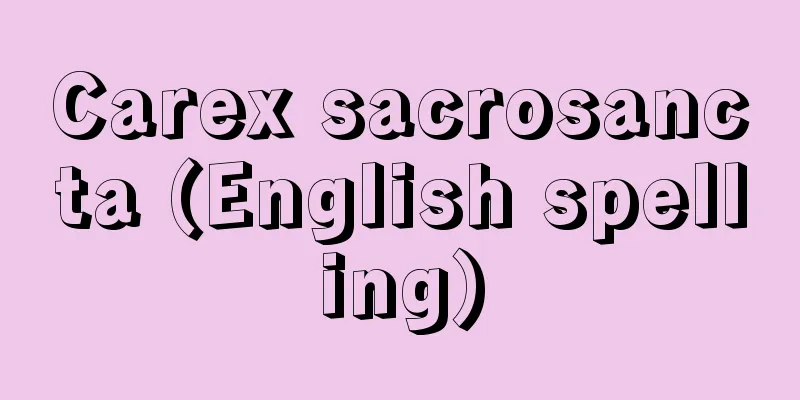Nanban sweets - Nanbangashi

|
Since a Portuguese ship drifted ashore in Bungo (Oita Prefecture) in 1541 (Tenbun 10) during the Muromachi period, ships from Portugal, Spain, and the Netherlands arrived in Japan, and the sweets that were brought along with guns, Western liquor, etc. were collectively called Nanban sweets. Nanban sweets include biscuits, castella, compeito (confetti), alger (apricot sugar), carmel (carmela), hiryousu (flying dragon head), bowl, egg somen, bread, and more. They were so highly valued in Japan at the time that Christian missionaries used them as a means of spreading the gospel. The method of making confetti in particular was difficult to understand, and Ihara Saikaku's "Nippon Eitaigura" describes the struggles people faced at the time (around 1688) when making confetti. Once the method was discovered, confetti was no longer considered a valuable commodity, and became an ordinary sweet along with apricot. Carmela was also easy to make, so it quickly fell into the category of cheap sweets, and is rarely seen today. Meanwhile, castella, a Japanese-style cake that does not use butter, evolved from a Nanban confectionery to a Japanese fresh confectionery, and has maintained its position as a high-quality confectionery to the present day. Nanban confectionery also left its mark on local specialty sweets. Among these, egg noodles from Hakata, Fukuoka Prefecture, Maruboro from Saga, Soba Horu from Kyoto, tarts from Matsuyama, Ehime Prefecture, and Oranda Battenbo from Hiroshima are well-known. Furthermore, the introduction of Nanban confectionery also brought with it the technique of sugaring, giving birth to many local specialty sweets. [Fumio Sawa] [Reference items] | | | | | | | | |©Shogakukan "> Castella ©Shogakukan "> Confetti It can also be read as "Ariheitou", Arhel, or Arihei . ©Shogakukan Ayame sugar Saga Prefecture ©Shogakukan "> Maruhoro © Matsuyama Tourism and Convention Association, Public Interest Incorporated Foundation "> Tart (Matsuyama City) Source: Shogakukan Encyclopedia Nipponica About Encyclopedia Nipponica Information | Legend |
|
室町時代の1541年(天文10)ポルトガル船が豊後(ぶんご)(大分県)に漂着して以来、ポルトガル、スペイン、オランダの船が日本に渡来したが、その際、鉄砲や洋酒などとともにもたらされた菓子を総称して南蛮菓子といった。 南蛮菓子にはビスカウト(ビスケット)、カステラ、コンペイト(金平糖)、アルヘル(有平糖)、カルメル(浮石糖(カルメラ))、ヒリョウス(飛竜頭=がんもどき)、ボウル、玉子素麺(そうめん)、パンなどがあり、キリスト教の宣教師たちは、布教の手段にこれらの菓子を用いたほど、当時の日本では珍重された。とりわけ金平糖などはなかなか製法がわからず、井原西鶴(さいかく)の『日本永代蔵(にっぽんえいたいぐら)』には、金平糖作りに苦心した当時(1688ころ)のようすが描かれている。その金平糖も仕法が解明されると貴重品扱いはされなくなり、有平糖などとともに並菓子になった。またカルメラは製法も簡単なところから早々に駄菓子に転落し、今日では姿をみるのさえまれになってしまった。 一方、カステラはバターを使わない和風ケーキとして、南蛮菓子から和生菓子に転進を遂げ、現代に至るまで上菓子の座を保っている。また南蛮菓子は地方銘菓にも足跡をとどめた。このうち福岡県博多(はかた)の鶏卵素麺、佐賀の丸芳露(まるぼうろ)、京都の蕎麦(そば)ほうる、愛媛県松山のタルト、広島の和蘭(おらんだ)ばってん棒などは有名である。さらに南蛮菓子の渡来は砂糖漬けの手法をももたらし、多くの地方銘菓を生んだ。 [沢 史生] [参照項目] | | | | | | | | |©Shogakukan"> カステラ ©Shogakukan"> 金平糖 「ありへいとう」とも読み、アルヘル、アリヘイともいう©Shogakukan"> 有平糖 佐賀県©Shogakukan"> 丸芳露 ©公益財団法人松山観光コンベンション協会"> タルト〈松山市〉 出典 小学館 日本大百科全書(ニッポニカ)日本大百科全書(ニッポニカ)について 情報 | 凡例 |
<<: Nanban-giselu (Nanban tobacco pipe) - Nanban-giselu (English spelling) Aeginetia indica
Recommend
Solar day - solar day
〘Noun〙 The time it takes for the sun to cross the ...
Left-handed snail (left-handed snail) - Left-handed snail (English spelling) Enhadra quaesita
As its name suggests, this snail has a left-handed...
Fregata minor (English spelling)
…[Hiroshi Hasegawa]. … *Some of the terminology t...
Dino Campana
Italian poet. He began writing poetry while study...
blue meat
…When TMAO is reduced, it produces trimethylamine...
open-cast mining
…a colloquial term for surface mining, or open-pi...
Rowan tree - Rowan tree
It grows in mountainous areas, and its leaves rese...
Crombie, AC (English spelling) CrombieAC
...Various books on the history of science, from ...
Cone - Kyuka
A general term for the fruits of so-called conife...
Dual-loading
A renga master in the mid-Muromachi period. He wa...
Spoonbill (English spelling)
A general term for birds of the Ibis family in the...
Equestrian
The art of riding and controlling a horse. Origin...
Leopoldo O'Donnell
Spanish military and politician. Born into an ari...
Ohara
This is the former area of the southern part of ...
Symbol - English
The philosophical European equivalent is derived ...









